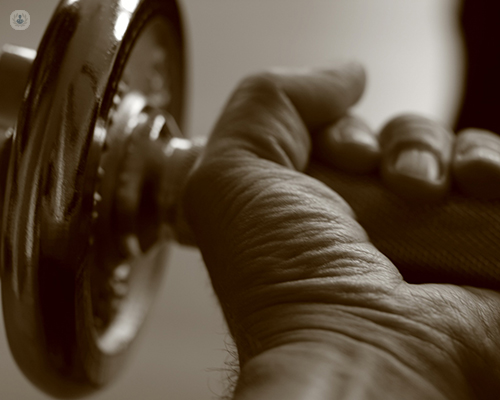Everything you need to know about scaphoid fractures
Escrito por:Scaphoid fractures are a very common injury, often mistaken for a sprained wrist. In our latest article, leading orthopaedic hand, wrist and elbow surgeon Mr Gunaratnam Shyamalan explains this fracture in detail, including the different treatment options available, and what to expect on the day of surgery.
How common are scaphoid fractures?
Scaphoid fractures are one of the most common wrist fractures, and they probably account for about 60 - 70% of the fractures in the small bones around the wrist.

It is a very common injury in young males, sometimes misdiagnosed as a sprain. It probably makes up about 5% of all fractures that people have in the body.
Is surgical treatment always required for this treatment?
No, surgery is not always required. About 80 to 85% of these fractures heal with a cast if treated appropriately. This is due to the shape of the scaphoid. It is shaped like a kidney bean, and if you break it in the middle, it still looks like it is intact. Due to this, it heals very well in a cast, up to 90-95%.
However, if the fracture is not near the middle of the scaphoid, then the blood supply isn’t very good. The chances of this healing are much lower, and a surgical treatment would be recommended.
Another problem is the misdiagnosis of a scaphoid fracture. Many people think that their scaphoid fracture is just a sprain, and don’t realise it was fractured for the first couple of months. Overall, the results of both surgical and non-surgical treatment are very good, once the fracture has been diagnosed correctly.
What are the advantages of performing scaphoid surgery arthroscopically?
The advantages of scaphoid surgery are that you can evaluate the joint, and look at the fragment to see if it is mobile or not. A screw can then be inserted to hold the fragment in place.
The advantages of arthroscopic scaphoid surgery are the advantages of arthroscopic surgery for any joint. Namely, it is minimally invasive, so less cutting of the surrounding structures, exposing less of the joint, and therefore protecting more of the blood supply. This means you will heal much quicker, and there will be much less swelling. For this reason, most scaphoid fractures are treated with keyhole surgery.
Are there any disadvantages or limitations to this kind of surgery?
There are always disadvantages to keyhole surgery with regard to access. In this instance, access means being able to evaluate the fracture and our ability to put in the bone graft and screw in an appropriate manner.
However, we now have live screen x-rays when we are performing this keyhole procedure, meaning we have a very good idea of where the screw is going in. When open surgery is performed, we can have a better idea of how the screw fits. However, even with open surgery, we do not always have the access that we want. So there are about the same disadvantages with open surgery, which is why surgeons who perform many scaphoid surgeries are now tending to lean towards keyhole surgery.
What is involved in an arthroscopic scaphoid surgery?
If the patient has been diagnosed with a scaphoid fracture and it has failed to heal, this is an indication for surgery.

On the day of the surgery, the patient will have an arm block, which makes the arm and hand go numb, or general anaesthesia. It is a day surgery, and it is done with antibiotics to prevent infections. We use a combination of screws and wires to hold the fracture in place. Sometimes we use bone grafts, and I usually take this from the patient’s wrist, meaning they don’t notice any extra procedures. The outcomes of the surgery are generally very good.
What is the recovery period like following this procedure?
The cast is generally taken off after about 4-6 weeks. I tend not to let the patient return to heavy lifting, manual work or contact sports until I have evidence that we have union. Union is when the bone has grown through the fracture, holding it in place. Once we have 50% union, I allow the patient to go back to most things.

We judge union in two ways. The first is asking the patient if they have any pain, and the second is using x-rays and CT scans to make sure the bone has healed. About 3 months after the surgery most people have enough confidence to return to most activities.
If you think you have a scaphoid fracture, or have any other orthopaedic concern, you can book a consultation with Mr Shyamalan today via his Top Doctors profile.


